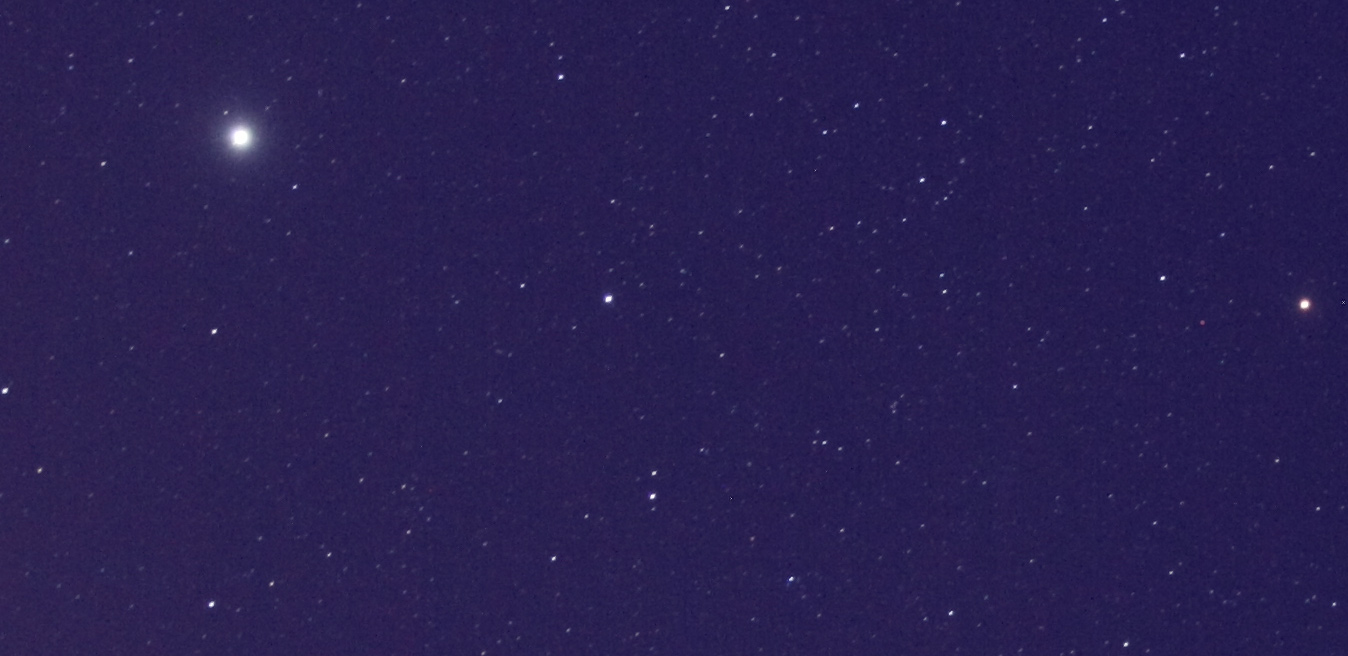
Star of Bethlehem
December 2014 :
As December rolls around, our thoughts naturally turn to holidays, the excitement of the upcoming new year, and, of course, the Star of Bethlehem, the enigmatic mention of a guidepost that led the Wise Men to the stable and the Child. This alleged portent is only mentioned once, in the Gospel of Matthew, as an almost aside, and yet, astronomers, philosophers and theologists have been trying for centuries to determine what, or if, this phenomenon could have been.
As astronomers, we try to learn if it could have been a fairly natural celestial occurrence. One reason is the Wise Men themselves, who, as Magi, were classed as Magicians, or, in the words of that time, Astrologers, who continuously checked the sky for “signs” of future events – and the birth of the Child would have been one of the highlights of their work. Because of this, we do have to believe there was something out of the ordinary that they noticed – yet, something not necessarily so fantastic that it would have been seen by everyone.
For instance, a supernova: A brilliant end of a star much larger than the Sun. But, if one had occurred, the possibility of it being seen by many would have been quite high. Also, there are no records of any during this time.
A comet? This is probably the least likely candidate, as comets were signs of terror, a sky object that brought fear to the masses – not a sign of joy to the Earth.
The best possibility is that of a planetary alignment. As astrologers, this type of celestial happening would have meant a great deal to a sky watcher, but might have gone unnoticed to the average person. And, if so, what? Were there any unique apparitions that might have occurred within the approximate time frame of the Birth?
Of course, the first question is when did the Birth actually take place. One thing we are sure of, is that it did not happen in the year zero. There was no year zero, as the last year listed as B.C. was 1, followed immediately by 1 A.D., which is why, to this day, decades begin on the year ending with one, and end at year ten.
We also have the king himself to consider. Herod, to whom the Wise Men visited, ordered them to let him know where the Child was, as Herod had been foretold that a King would be born who would depose him, and he wanted to deal with this rival as soon as possible. Fortunately, a dream alerted the Magi to run out of town, sadly forcing the king to murder all male children two years old and under. We do know that Herod died not too long after this declaration, so to choose a point of the birth must take that time into consideration.
The most likely scenario, if we consider a planet explanation, is one of two sets of planetary conjunctions. The first, beginning about 7 B.C., involved a close conjunction of Jupiter and Saturn. This was followed by a second conjunction of them, and finally a third, with the planet Mars then coming very close to the pair. In addition, this last is said to have occurred in Pisces, considered a very sacred constellation at that time.
Also, between 2 and 1 B.C., there was a triple conjunction of Jupiter with Regulus, the heart of Leo, the Lion. The importance of this is the fact that the Lion is the king of the jungle, or the king of beasts, and his heart star is a variation of the word for king. And, then, after the triple conjunction, Jupiter, the fourth brightest celestial object, was joined very closely by Venus, the third brightest celestial object, creating an effect not often witnessed in the sky.
Could one of these planetary alignments have been what the Magi had been waiting to witness? Or, was the Star of Bethlehem just an unexplainable incident, a first and only to mark a once-in-a-lifetime event? Or, was it nothing at all, just a note of fiction written by Matthew to attempt to explain the events of the time? Whatever it was – or wasn’t – we at Seagrave Observatory wish you all the best of the holidays, and the happiest New Year.



